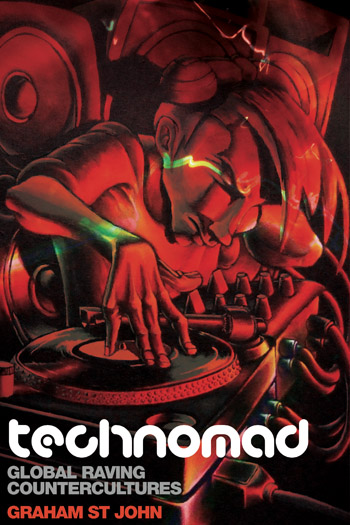Reviews
The analyses of psytrance culture found in this book are insightful and serve to illuminate its complex religious dimensions.
Nova Religio, August 2014
From the esoteric traveler jams of Goa to the liminal zones of Boom and Burning Man, Graham St John guides us through the cosmic carnival of global psytrance with an intoxicating blend of deep research, empathic ethnography, and edge-dancing cultural analysis. This is the definitive book on what has become, from the perspective of planetary spiritual culture, the most resonant music scene of our transhuman century.
Erik Davis, author of The Visionary State and Nomad Codes: Adventures in Modern Esoterica
Graham St John writes more insightfully about psytrance than any other academic. He provides a sophisticated understanding of that subtle relationship between contemporary spirituality, dance and music. The festival and the party are also a window into broader cultural trends. He understands both the intensity and transformative experience of psytrance, and draws on, and develops, contemporary academic theory to interpret psytrance in a way that is both respectful and incisive. We need more work like this.
Douglas Ezzy, Associate Professor of Sociology, University of Tasmania
Idealism is particularly rampant in the psytrance phenomenon, as documented in tremendous detail by Graham St. John in his new book. Rising out of the scene in Goa, India (which should be our first red flag) in the 1970s (which should be our second red flag), ‘Goatrance’ as it came to be called ‘later developed as psychedelic trance or psytrance, which splintered into numerous subgenres by the early 2000s’ (p. 3). Accordingly, the book “is a study of the Goatrance movement as it mushroomed around the world from the 1990s, attracting the designation “psytrance” by the end of that decade’ (p. 3). Showing a truly stunning familiarity, even an affection, for the psytrance circuit (St. John is the founding executive director of Dancecult: Journal of Electronic Dance Music Culture, and his own website has a distinctly psytrance feel to it), the author explores the musical and technological foundation of the movement, its relation to the 1960s ‘quest for experience’ (p. 4), and its evolution (or devolution, depending on your point of view) in the context of global tourism, modern spirituality, and late-capitalist commodification of just about everything.
Anthropology Review Database (click here to read the full review)








